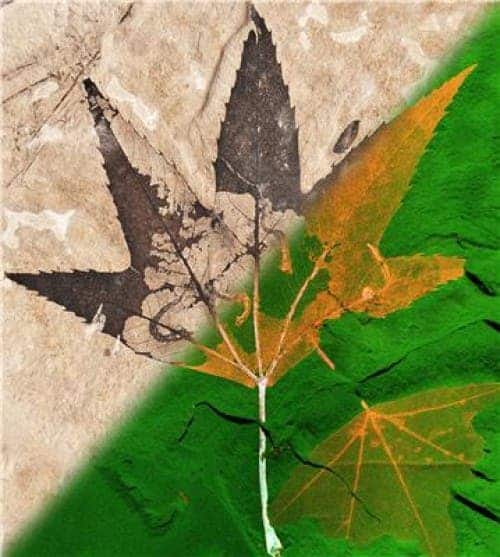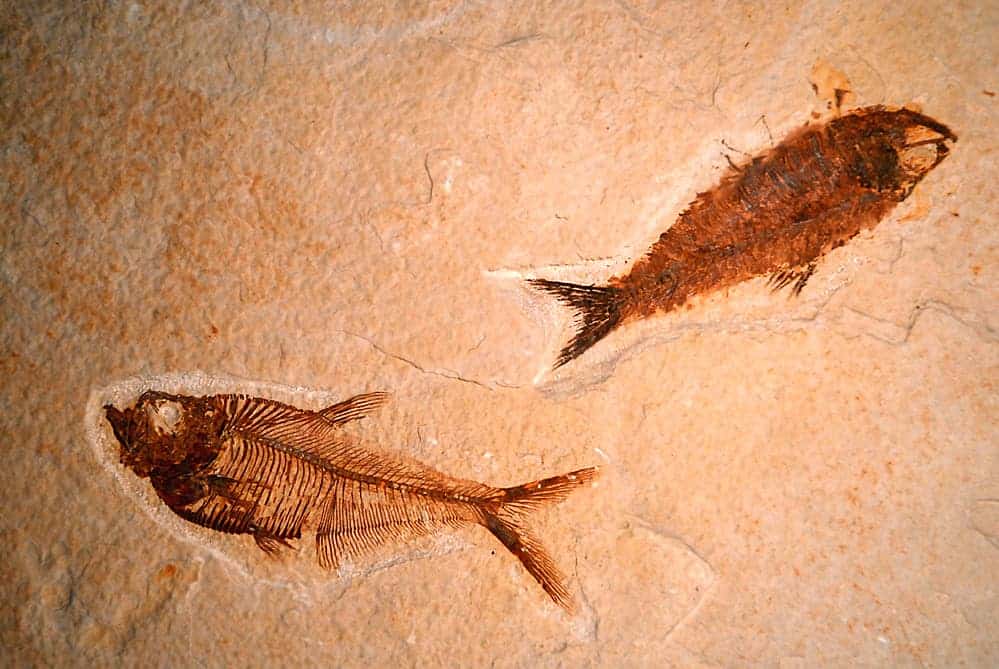Scientists have used one of the brightest light sources in the Universe that we know of to expose the biochemical structure of a 50 million-year-old fossil plant to stunning visual effect. The mixed team of paleontologists, geochemists and physicists bombarded the fossils with extremely bright X-rays and showed that the chemical makeup of the plant hasn’t changed much since the Eocene.
Exceptional fossils, exceptional methods

The exceptional fossils come from the Eocene (approximately 55-34 million years ago), from a formation called the Green River Formation in the Western United States. The formation is famous due to its exceptional nature and has been used for many studies. Sediments there were deposited in very fine layers, a dark layer during the growing season and a light-hue inorganic layer in the dry season – each pair of layers (called varve) represents a year, holding valuable information about that year (how much it rained for example). The area is very rich in fossils, featuring not only very detailed plant fossils, but also fish, birds and even crocodiles.
Researchers from Britain’s University of Manchester and Diamond Light Source and the Stanford Synchrotron Radiation Lightsource in the US used a particular type of cyclic particle accelerator (called a synchotron) to create a light stronger than that of a million suns, and used it to study the plant fossils.

Lead author Dr Nicholas Edwards, a postdoctoral researcher at The University of Manchester, said:
“The synchrotron has already shown its potential in teasing new information from fossils, in particular our group’s previous work on pigmentation in fossil animals. With this study, we wanted to use the same techniques to see whether we could extract a similar level of biochemical information from a completely different part of the tree of life. To do this we needed to test the chemistry of the fossil plants to see if the fossil material was derived directly from the living organisms or degraded and replaced by the fossilisation process.
It may seem surprising that the fossil chemistry can be conserved over such long periods of time, but that shouldn’t really come as a shock.
“We know that plant chemistry can be preserved over hundreds of millions of years — this preserved chemistry powers our society today in the form of fossil fuels. However, this is just the ‘combustible’ part; until now no one has completed this type of study of the other biochemical components of fossil plants, such as metals.”
Identical to today’s plants
Among the things which they wanted to understand was how did the plants’ chemistry change in the tens of millions of years which passed since the Eocene. But interestingly enough, their work showed that the chemical make-up was virtually identical. The distribution of copper, zinc and nickel in the fossil leaves was almost identical to that in modern leaves. Different biological structures concentrated different chemical elements, nd the way these trace elements and sulphur were attached to other elements was very similar to that seen in modern leaves and plant matter in soils.
Co-author Professor Roy Wogelius, from Manchester’s School of Earth, Atmospheric and Environmental Sciences, said:
“This type of chemical mapping and the ability to determine the atomic arrangement of biologically important elements, such as copper and sulphur, can only be accomplished by using a synchrotron particle accelerator.
“In one beautiful specimen, the leaf has been partially eaten by prehistoric caterpillars — just as modern caterpillars feed — and their feeding tubes are preserved on the leaf. The chemistry of these fossil tubes remarkably still matches that of the leaf on which the caterpillars fed.”
This suggests not only that the chemical structure of plants hasn’t changed significantly, but also that fossil plants don’t get their chemical makeup from the environment, as was previously believed by some geologists, but in fact represents that of the living leaves.
The research team also mentioned that the big amounts of copper helped preserve the leaves in such a magnificent way:
“We think that copper may have aided preservation by acting as a ‘natural’ biocide, slowing down the usual microbial breakdown that would destroy delicate leaf tissues. This property of copper is used today in the same wood preservatives that you paint on your garden fence before winter approaches.”, mentioned Manchester palaeontologist and co-author Dr Phil Manning.


